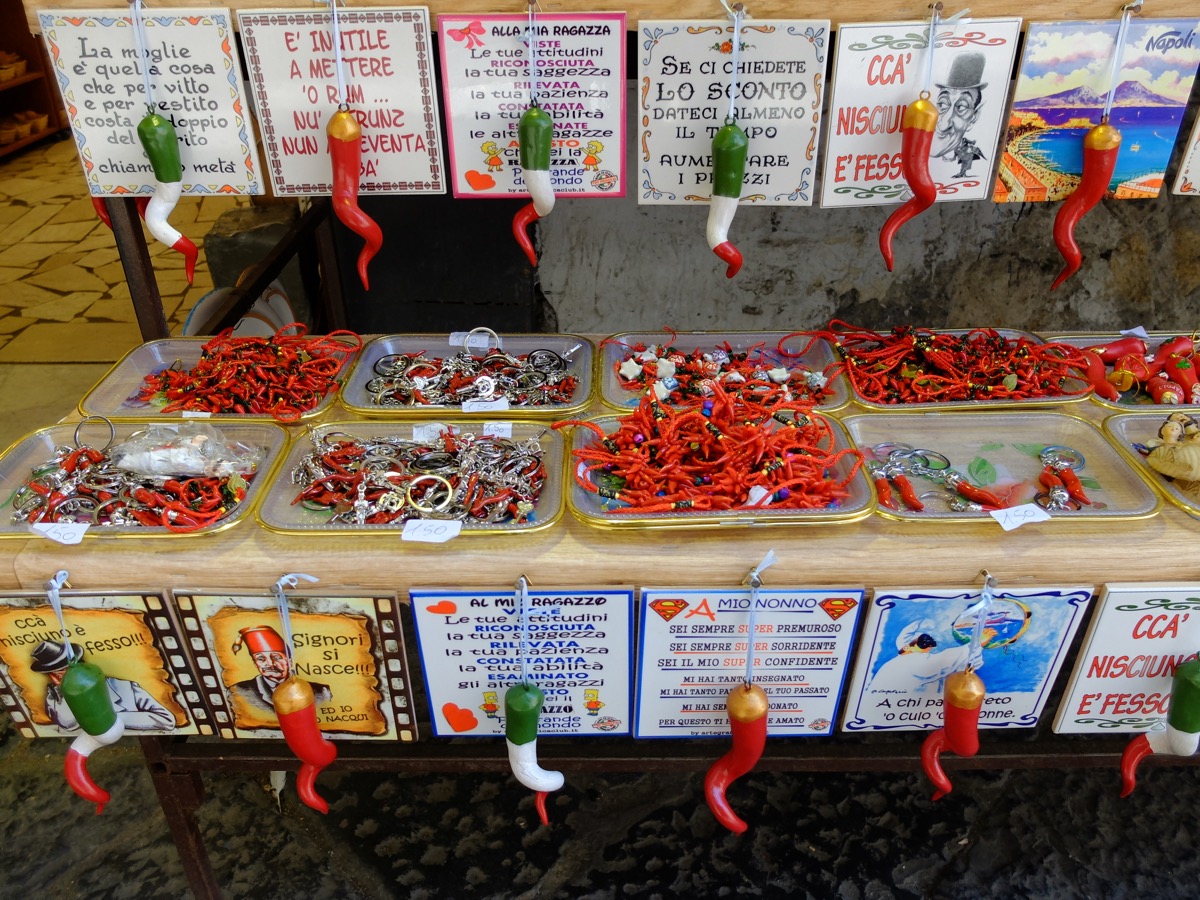Someone once said “you see Naples and then you die” meaning that a more beautiful city doesn’t exist. One thing for sure, it is one of the most fascinating Italian cities, rich in culture, tradition and breath-taking monuments making it so very unique.
The ex-capital of the Kingdom of the two Sicily’s shows its splendour of that era that made it a grandeur with royal palaces, expansive gardens and beautiful monuments; the flipside of the coin is the over populated Naples made up of alleys and poverty where past beliefs and superstitions continue to exist. The piercing contrast between these two extremes really makes it a unique and unparalleled city. And let’s not mention what is found on the outskirts of the city! One could stay in Naples for a month without seeing the same place twice: Pompeii, Caserta, the Amalfi Coast, Capri, Ischia, Procida. The more choice you have, the longer you take.
As usual one needs to make a selection or go back again and again. Here is what you need to see in Naples if going for the first time:
Spaccanapoli and the Historic Centre
The majority of interest websites on Naples gravitate towards two main arteries: the so called “spaccanapoli” (formed by Via B.Croce, Via San Biagio dei Librai and Via Vicaria Vecchia e Via dei Tribunali) a jumble of alleyways that hide monasteries, sanctuaries, historical squares, shops and underground treasures. Departing from Via Toledo, in the following order, the suggested legs are obligatory: Sansavero Chapel (with Christ veiled by Giuseppe Sanmartino, one of the most beautiful sculptures in the world). The Basilica of Santa Chiara with its majolica monastery, the complex monument of San Lorenzo Maggiore (a medieval work of art), via San Gregorio (crowded with artisans that produce and sell famous nativity scenes), the Pio Monte of Misericordia (with its famous “The seven operas of the Misericordia” painted by Caravaggio), to then close your tour with the Duomo and its sixth hundredth chapel of San Gennaro.
Departing again from Via dei Tribunali you gain access to the Naples Underground: a guided tour leads you 40mt below street level to explore the labyrinth of galleries, tunnels, aqueducts and cisterns that the Greek excavated to utilise the rock for construction. A part of the tour is done by candlelight and is super suggestive (note: to avoid if you suffer from claustrophobia) An obligatory stop is for lunch at a typical, authentic pizzeria such as “da Michele” (prepare to que) as well as “Sorbillo.
Sant’Elmo Castle and the Certosa of San Martino
If you raise your gaze, at almost every part of the city you can see the Sant’Elmo Castle, a fort utilized as a military prison until the 70’s and now open to the public. The view enjoyed from the high terraces is unmatched: from one side you see the historic city centre with the Vesuvius at your shoulders, from the other side Chiaia and the naval village of Castel dell’Ovo. Inside you will also find the Nine Hundred Museum dedicated to Neapolitan art from the XX century. Watching the sunset here is priceless!
Just below the fortress is the entrance to the Certosa of San Martino. In this ex monastery, the Neapolitan baroque style reaches its peak and one remains at a loss for words in the awe of all this beauty.
This Certosa has been decorated, embellished and modified over the course of the centuries by the greatest names of Italian art and architecture and it is unmissable. From the Certosa Square you can continue with a beautiful guided walking tour heading down the solitary Pedamentina stairs (one of the oldest walks of the city) which connects the top part of Naples and its city centre in a suggestive and panoramic route towards the belly of the city. http://www.curioseety.com/it/le-guide/napoli-inves...
The cemetery of the Fontanelle
Recently restored and opened to the public this very particular cemetery (located in a cave) is fast becoming one of the obligatory stops for whoever visits Naples. Initially used for taking in victims of the plague in 1656, during the following years it became the principle place for burials of the city during the cholera epidemy in 1837. Towards the end of the 800’s it became a cult location for the worship of the “capuzzelle” (skulls): the custom was to adopt a capuzzella (and here there are over 8000!) and pray for the soul of the deceased. it is a unique and suggestive place infused with magic and spirituality.
If you are fanatical about esotericism and magic, you could take a guided tour of Naples specifically dedicated to these topics. It leaves from the Duomo, passes by the Cappella Sansevero (the temple of the Napolitano Masonry) and ends off with a visit to the Fontanelle cemetery, reading and listening to anecdotes about the combination of sacred and profane which the Napolitano spirituality is deeply permeated with. http://www.curioseety.com/it/le-guide/fabio-comell...
Pompeii and the Amalfi Coast
Just a stone throw from Naples there are other priceless treasures like the Pompeii ruins and the Amalfi Coast. Easily reachable from Naples with an hour train ride (the famous “circumvesuviana” which stops directly at the entrance), this archaeological site is one of a kind. The antique city of Pompeii remains under ashes from the eruption of the Vesuvius in 79 AC and all remained completely blockaded from that moment. Today visitors can see a cross section of ancient life extraordinarily preserved, sweeping streets from the Roman era that meet residential dwellings and commercial activities (including brothels) which are millions of years old.
Continuing along the same line of the “cicrumvesuviana” one gets to Sorrento, the point of departure for your tour of the Amalfi Coast. Defined by the UNESCO as “a Mediterranean passage with immense cultural and natural value” the Amalfi Coast is piece of coastline with extreme beauty, made up of breath-taking landscapes, vegetation, mountains that meet the waters edge and a string of picturesque villages. If anything, don’t miss out on Sorrento, Positano, Amalfi and Ravello.
Napoli is easily seen both on foot or by bicycle (especially along the beautiful promenade that passes through Maschio Angioino, Castel dell’Ovo and Chiaia) and it is the perfect destination for children. The main square (the best you could imagine), the secret rooms of the fortress and the historic buildings, the tunnels of the underground city and the sea...what more could you ask for!


